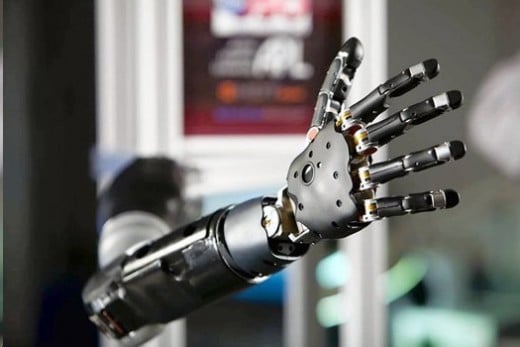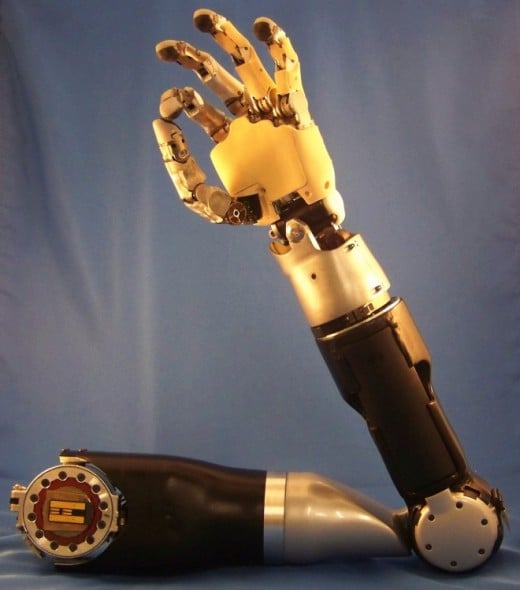DARPA Robotic Prosthetic Arm Gets Fast-Tracked by FDA
DARPA Fast Tracks Robotic Prosthetic
DARPA (Defense Applied Research Projects Agency) has long been known as a funding agency for the Department of Defense. Most of it's funding goes for new weapon's systems research, autonomous vehicle navigation and the like.
But in this particular instance the funding is going to a robotic arm which promises to be a limb replacement for soldiers injured in battle. As such DARPA and the FDA have teamed up to "fast track" the device.
This article will be about the, as yet unnamed, device and potential uses.

DARPA Arm
The arm has been in development for at least the last five years. In that time the project has cost one hundred million ($100,000,000.00) dollars.
On Tuesday, February 15, 2011, the FDA (Food and Drug Administration) pledged to fast-track the DARPA device. As such the agency will speed up the approval process for the device in hopes of getting into clinical trials in short order. This means that four years from today the device could actually be put to use by returned veterans of the Afghan and Iraq wars.
First, the DARPA arm is a brain controlled robotic prosthetic that has taken a hundred million dollars and some years to develop.
Second, the prosthetic arm is robotically controlled via a chip implanted in the user's brain. The idea it to make it more like a real limb that current prosthetics.
About the Arm
The silver and black arm can rotate, twist and bend in twenty-seven (27) different directions including independent finger control. The idea is to mimick the actions and movements of a natural limb. As such it is anthropomorphic (resembles a real arm) just like the arm most of us were born with. The arm is slated to weight about nine pounds; the same weigh as most flesh and bone arms.
Eventually the arm could aid stroke victims, quadriplegics or anyone else who has lost a limb. Naturally the first recipients are likely to be troops returning (or returned) from Afghanistan or Iraq; victims of Improvised Explosive Devices (IEDs).
Clinical Trials
DARPA expects to implant five volunteers with the micro-chip Arm controller. These five will be monitored for a year. There are problems of course, even though the chip implant is a tried and proven technique. Sometimes the chips are rejected as a "foreign object" in the body and other times signals from the chip degrades over time.
Still, if the trials are successful we could see the arm in use in four to five years.

FDA Funding and Criticisms
The FDA has long been a target of criticism as an "innovation graveyard." Approval processes are long and involved and typically cost millions of dollars to bring to completion. There is also the time involved. The average length of time a new drug or prosthetic faces from submission to approval is ten years.
Even so the FDA can only afford to "fast-track" one or two projects a year. The DARPA arm qualifies as such.
A Johns Hopkins team of scientists have received a $34.5 million contract from DARPA to manage the next trial stages of the project. Testing will involve placing the limb on a human who has had a microchip implanted in his/her brain. The chip will intercept the signal normally sent to control limbs and route those amplified signals to the arm. The arm is even rumored to be able to provide feedback to the human through that same signal pathway.
Johns Hopkins Test Plan
Johns Hopkins scientists hope to test the arm on five patients. Fellow researchers from DARPA Caltech, University of Pittsburgh, University of Utah and the University of Chicago, will also participate
“The goal is to enable the user to more effectively control movements to perform everyday tasks, such as picking up and holding a cup of coffee.” - Michael McLoughlin
There have been other problems that these university researchers may be able to solve. One problem is a short life-span of the micro-chip implant. That life-span is typically two years. Another is providing the wearer with tactile (touch) feedback from the fingers on the arm.
DARPA, on the other hand, is hoping to develop a device, interface included, that will last up to seventy years. This is quite ambitious when compared to the current state of the art.
Data Stream Problems Must Also be Addressed
Another problem involves the amount of data that needs to be sent to the arm's controllers from the brain. Simple motion like bending your arm to eat, is a series of thousands of movements. These movements also involve sensations, cues, neuron communication.
Current DARPA designed processors can handle up to five hundred events per second. This is not nearly enough to control a robotic prosthetic.
Coda
DARPA does not have the best history of bringing ideas to fruition. But considering that the agency was formed precisely to explore the impossible this should really be no surprise.
I do feel that if DARPA and the FDA are successful in pushing this device to market we could see many advances in other areas that touch on this technology. Robotics, exo-suits, and other devices that do not serve as prosthetics, but as power extenders such as wheel chair replacements or walking assist devices.
Disclaimer
The author was not compensated in any way, monetarily, with discounts, or freebies by any of the companies mentioned.
Though the author does make a small profit for the word count of this article none of that comes directly from the manufacturers mentioned. The author also stands to make a small profit from advertising attached to this article.
The author has no control over either the advertising or the contents of those ads.



